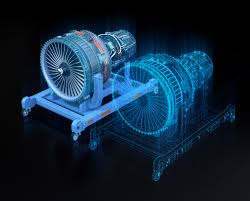Introduction: The Rise of Digital Twins
Imagine having a perfect virtual replica of something in the real world — from a sneaker to a spacecraft. That’s the promise of Digital Twins, a technology blending the physical and digital worlds for better design, simulation, and problem-solving.
Originally developed for NASA missions, Digital Twins are now transforming industries at lightning speed — from fashion runways to deep space missions.
In this blog, we’ll explore 7 powerful ways Digital Twins are reshaping our world and what it means for businesses and consumers alike.

1. Designing Smarter Fashion Collections
Fashion meets data. Leading fashion houses are using Digital Twins to create virtual garments, test fit and style on 3D models, and simulate materials without wasting fabric.
- Impact: Reduces prototyping costs by up to 30%.
- Example: Brands like Nike and Gucci are testing products virtually before mass production.
- Benefit to Consumers: Faster product launches and more customization options.
2. Improving Space Exploration Safety
NASA pioneered Digital Twins to monitor spacecraft in real time and predict failures before they happen.
- Impact: Boosts mission safety and efficiency.
- Example: Simulating Mars rover operations before deployment.
- Benefit to Consumers: Advances in space tech often trickle down into everyday products — from GPS to improved materials.
3. Revolutionizing Automotive Design
Automakers like Tesla and BMW use Digital Twins to create virtual prototypes, test aerodynamics, and simulate crash scenarios.
- Impact: Cuts development time by up to 25%.
- Example: BMW’s “factory twin” optimizes assembly line efficiency before physical production begins.
- Benefit to Consumers: Safer cars, faster innovation cycles, and potentially lower prices.
4. Reducing Industrial Downtime
Manufacturing plants integrate Digital Twins to monitor equipment health in real time.
- Impact: Predictive maintenance reduces downtime by 50%.
- Example: Siemens uses them to predict failures in turbines and industrial machines.
- Benefit to Consumers: More reliable products and services with fewer delays.
5. Making Smart Cities Smarter
Urban planners use Digital Twins to simulate traffic, energy use, and disaster scenarios.
- Impact: Increases efficiency in city infrastructure planning.
- Example: Singapore’s Virtual Singapore project.
- Benefit to Consumers: Smoother commutes, better public services, and safer neighborhoods.
6. Transforming Healthcare with Precision

Digital Twins of the human heart, lungs, or even entire bodies help doctors test treatments virtually before applying them to real patients.
- Impact: Improves treatment success rates and reduces risks.
- Example: Philips and GE Healthcare use patient-specific Digital Twins for surgery simulations.
- Benefit to Consumers: Personalized treatment with fewer side effects.
7. Enhancing Renewable Energy Systems
Wind farms and solar plants use Digital Twins to predict weather impact and optimize performance.
- Impact: Increases energy output and reduces maintenance costs.
- Example: General Electric’s wind farm optimization.
- Benefit to Consumers: Cheaper, cleaner, and more reliable energy.
Challenges in Digital Twin Adoption
While the benefits are enormous, Digital Twin technology faces challenges:
- Data Security: Sensitive operational data must be protected from cyberattacks.
- High Initial Costs: Developing accurate twins requires substantial investment.
- Integration Complexity: Requires syncing multiple data sources in real time.
- Skilled Workforce: Shortage of engineers and analysts with twin expertise.
The Future of Digital Twins
By 2030, Digital Twins are projected to be a $150 billion industry, integrated into everything from virtual fitting rooms to moon bases. As computing power, IoT, and AI continue to evolve, these virtual replicas will become even more realistic and powerful.
Conclusion
Digital Twins aren’t just a tech buzzword — they’re a powerful shift in how we create, test, and improve everything around us. From fashion to space, their ability to blend the physical and digital worlds means better products, safer systems, and smarter decisions.
If the last decade was about going digital, the next will be about perfecting the digital copy.





